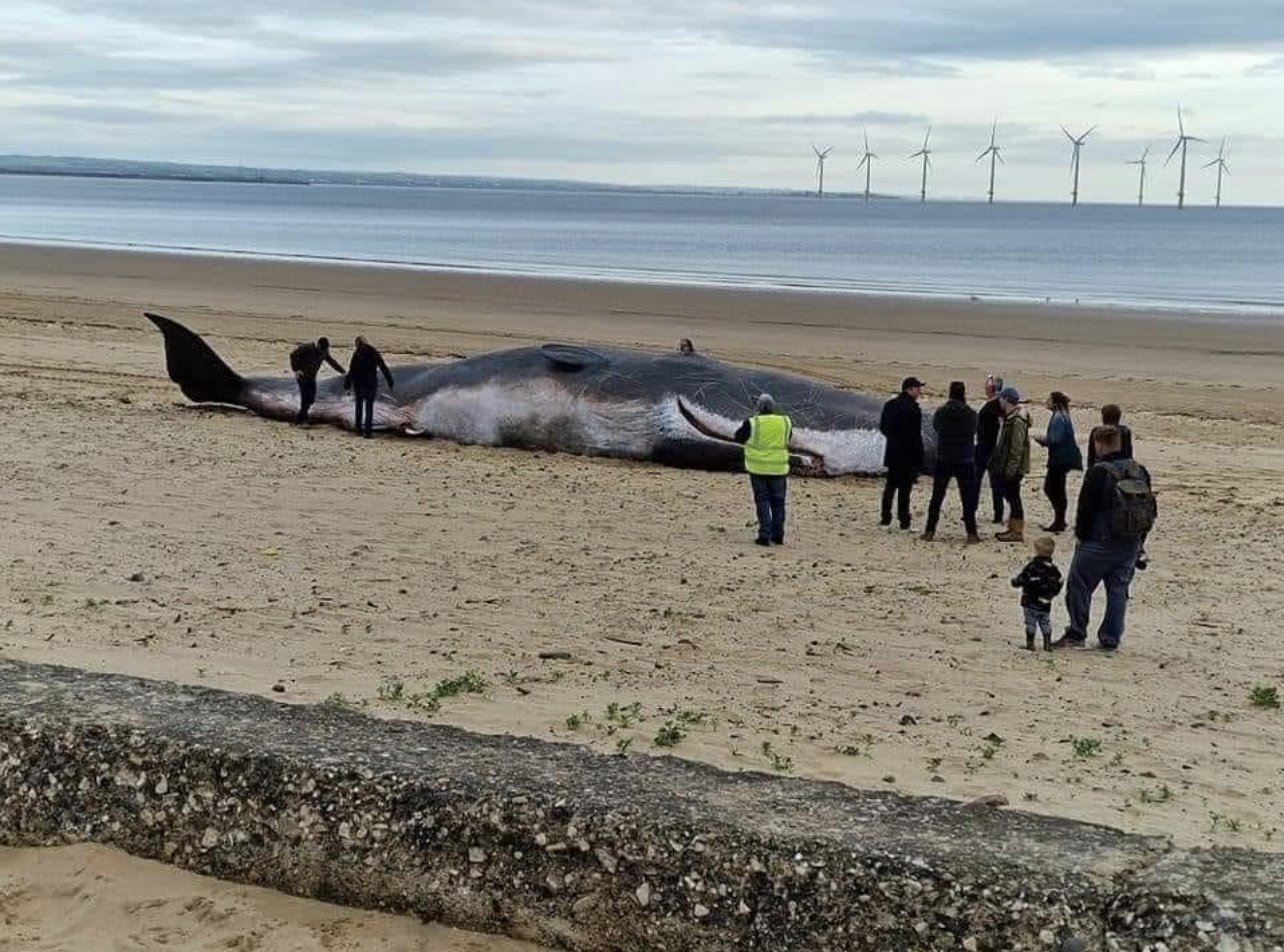Whale of A Problem

A whale corpse is identified off the coast of New Jersey. Photo: Protect Our Coast NJ
5/28/2023, 9:17:56 PM
I have devoted this column to try to make the world a better place. One topic I have never ventured into is wildlife conservation. I have a son who is a Veterinarian so this should be a natural fit for me.
More than 23 whales have washed up on the coast of New York and New Jersey since December 2022. The National Oceanic and Atmospheric Administration (NOAA) calls this “an unusual mortality event”.
The predominant whale involved is the humpback. Humpbacks typically live 90 years, weigh 40 tons and grow to 60 feet. The United States declared humpback whales an endangered species in 1970 under the Endangered Species Conservation Act.
A 40 year old humpback named, Luna, washed up on January 30, 2023 close to my home. The NOAA believes that vessel strikes (this is how Luna died) entanglement in fishing equipment, excess algae, and changing water temperatures are the biggest threats to the species.
This might explain some of the whale beaching but the high number of deaths in such a short time brings another explanation to the fore. At the same time humpbacks are washing ashore, work on wind Turbine ocean farms has been ongoing. The same type of spike of humpback deaths occurred between December 2016 and Feb. 2017 in Virginia and North Carolina when ocean wind Turbine farms were being built there. New Jersey has the most ambitious program of setting up wind farms providing electricity to 3.2 million homes by 2035.
Setting up these gigantic wind turbines in the ocean requires use of pulses of sound to map the sea floor surface and subsurface. Hundreds of these 300-900 foot tall turbines (the Eiffel Tower is 300 feet tall in comparison) are planned off the coast of New York and New Jersey. 30 mayors from New Jersey have asked for a halt on further construction till the effects on the humpback is studied. New Jersey State Senator Vince Polistina said, “It’s hard to believe that the death of these whales on our beaches is just a coincidence.” It is believed that the sound pulses used in the construction of these wind turbines interferes with the whale’s own sonar used to communicate. The temporal relationship to the “unusual mortality event” makes this hypothesis quite legitimate.
The attempt to expand energy conservation is apparently leading to a crisis of wildlife conservation. The vanishing oceans are becoming more real each day. I agree with the idea of a moratorium on the offshore wind farm construction until one can prove that the whale population is not affected.